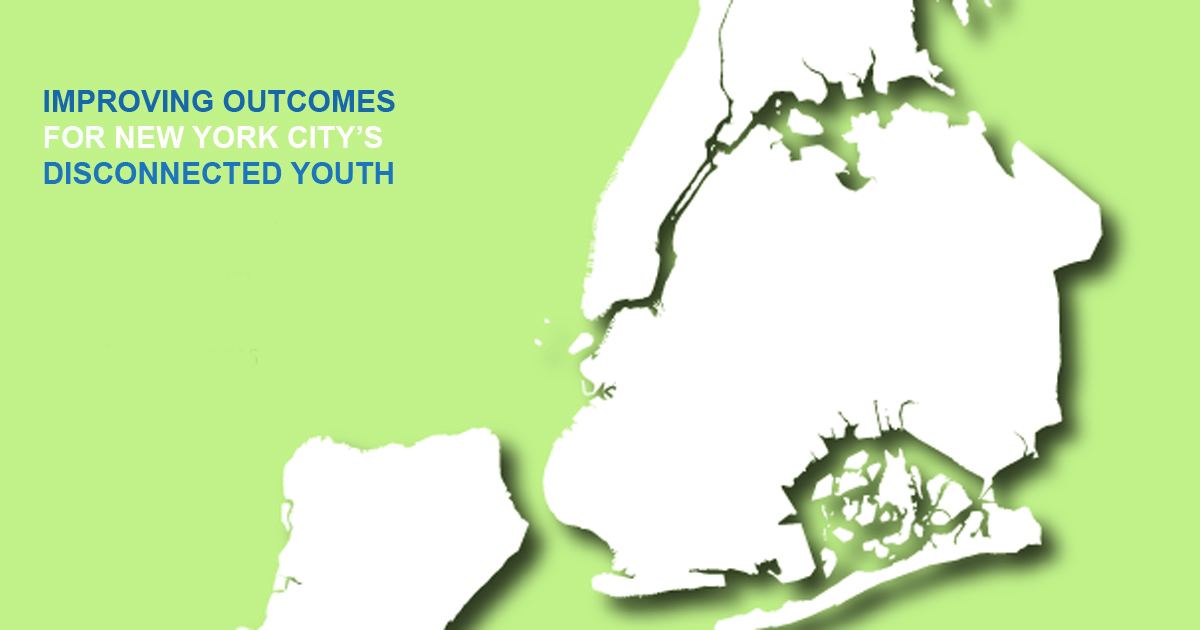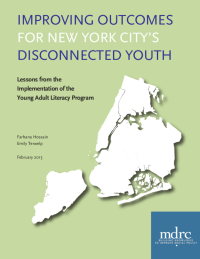Improving Outcomes for New York City’s Disconnected Youth
Lessons from the Implementation of the Young Adult Literacy Program

In 2008, New York City’s Center for Economic Opportunity (CEO) launched the Young Adult Literacy (YAL) program to improve the academic and work-readiness skills of youth who are not in school, do not have a job, and have very low literacy skills. In fiscal year 2013, eight community-based organizations and the city’s three public library systems operated the program at 17 sites, with oversight from the Department of Youth and Community Development.
The YAL program targets 16- to 24-year-old young adults who read at the fourth- through eighth-grade levels, and serves them until they are academically ready to enter a program that prepares them for a high school equivalency (HSE) certificate. The year-round program offers up to 15 hours of literacy and numeracy instruction each week, along with social support services, life skills and work-readiness training, a paid internship, and some modest incentives.
In the summer of 2013, MDRC conducted an implementation study of five YAL sites in order to explore factors that facilitate or challenge successful program implementation. This report presents the findings, which are largely based on an analysis of qualitative data from staff interviews, participant focus groups, and observations of classrooms and internships, as well as a review of program participation data.
Key Findings
Characteristics of the host organizations play a significant role in shaping the implementation of YAL. The program draws financial, administrative, and staff support, as well as in-kind resources, from the organizations through which it operates.
Most sites did not find it challenging to recruit participants for the program, reinforcing the idea that there is a need for programs that serve low-literacy youth in New York City.
While the study was not designed to test how different strategies and practices affect program performance, the high-performing YAL sites were found to have a few features and practices in common, including:
-
Involved leaders with experience implementing youth-focused programs
-
A team environment where staff collaborate formally and informally on a regular basis
-
Clear articulation and consistent reinforcement of program norms
-
Full-time academic instructors with adequate time for lesson planning
-
Social service staff who are consistently available and who foster personal relationships with students
-
Availability of on-site HSE certification training to help students make the transition from completing YAL to obtaining an HSE certificate
- A structured, multistep selection and enrollment process, as well as extensive eligibility screening and processes for determining suitability for the program
CEO Response to MDRC Evaluation of the Young Adult Literacy Program






